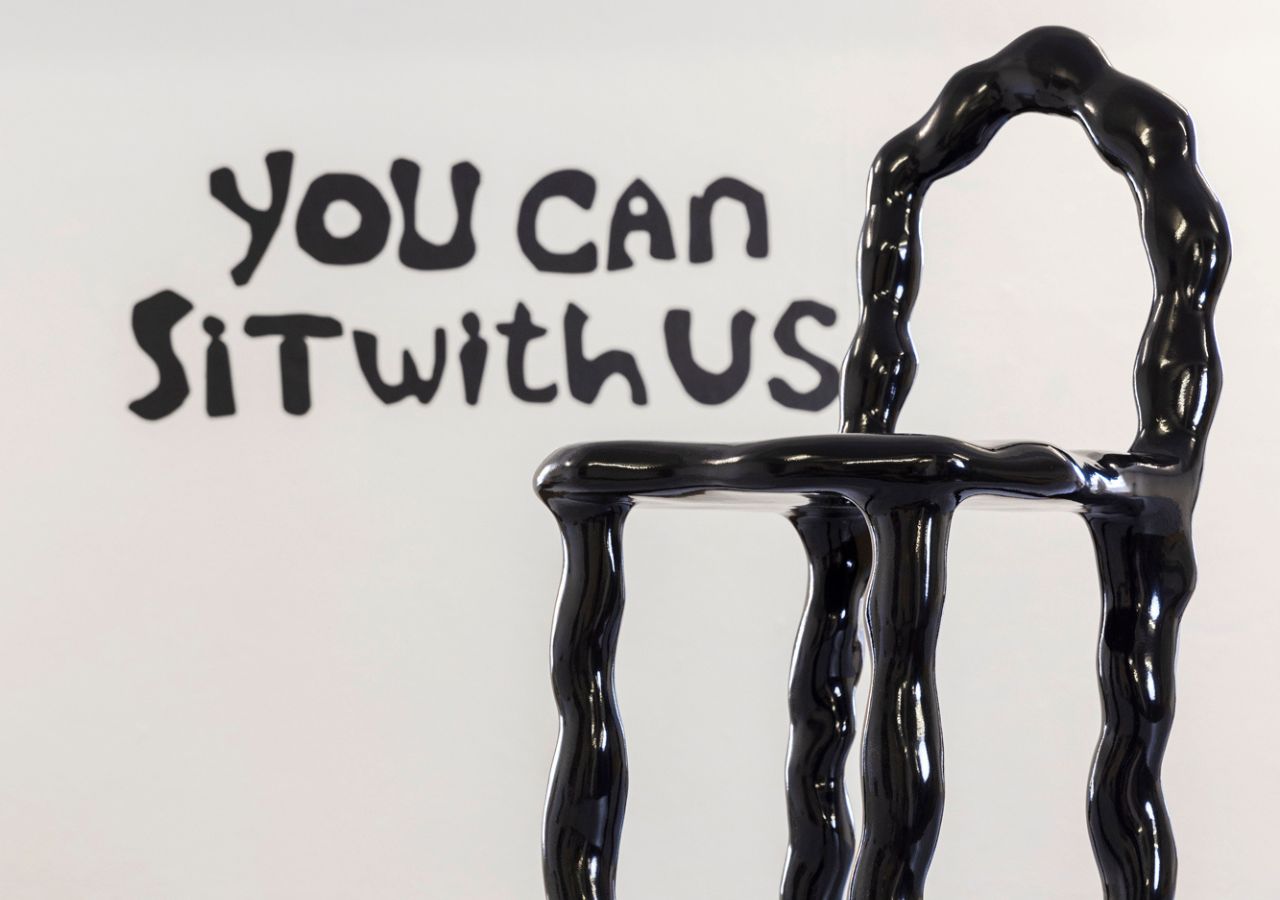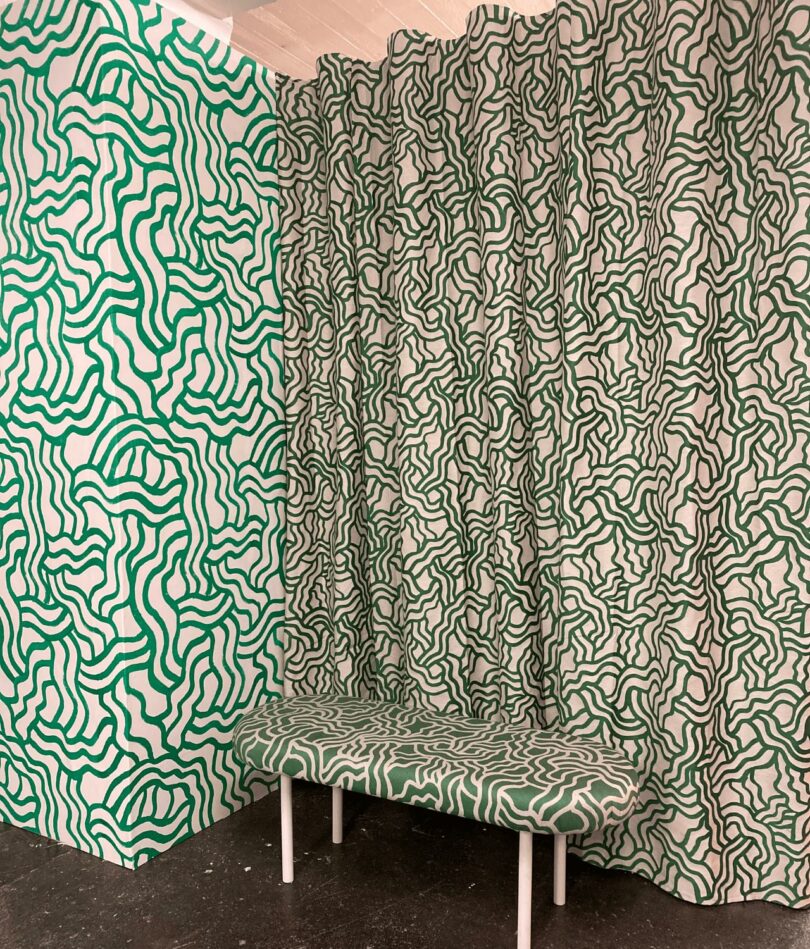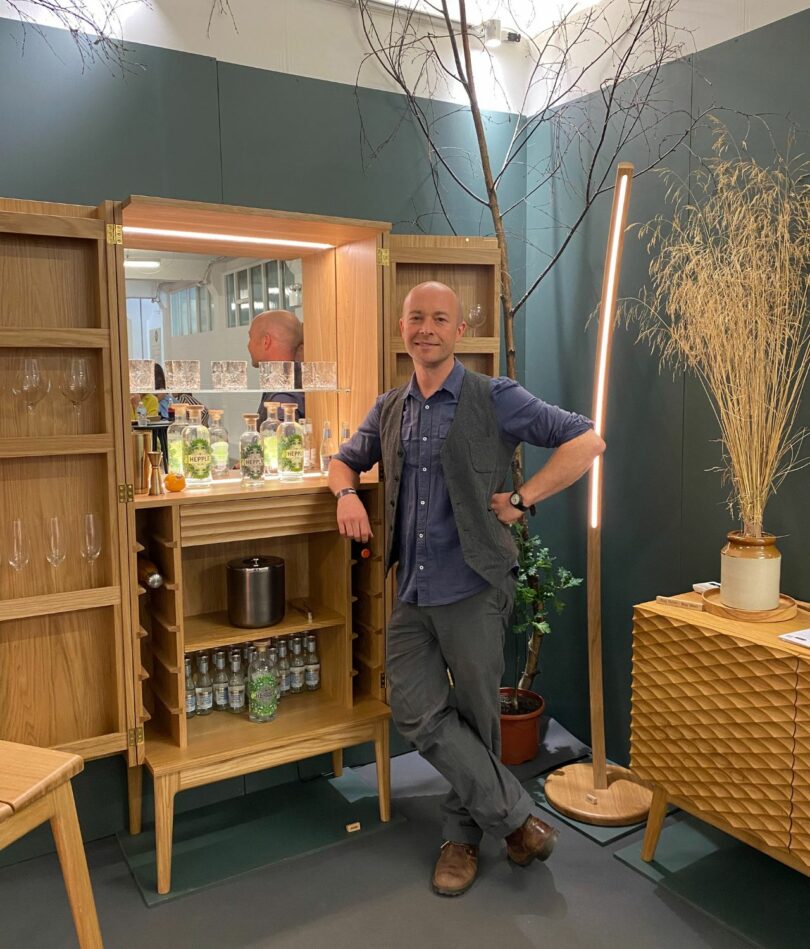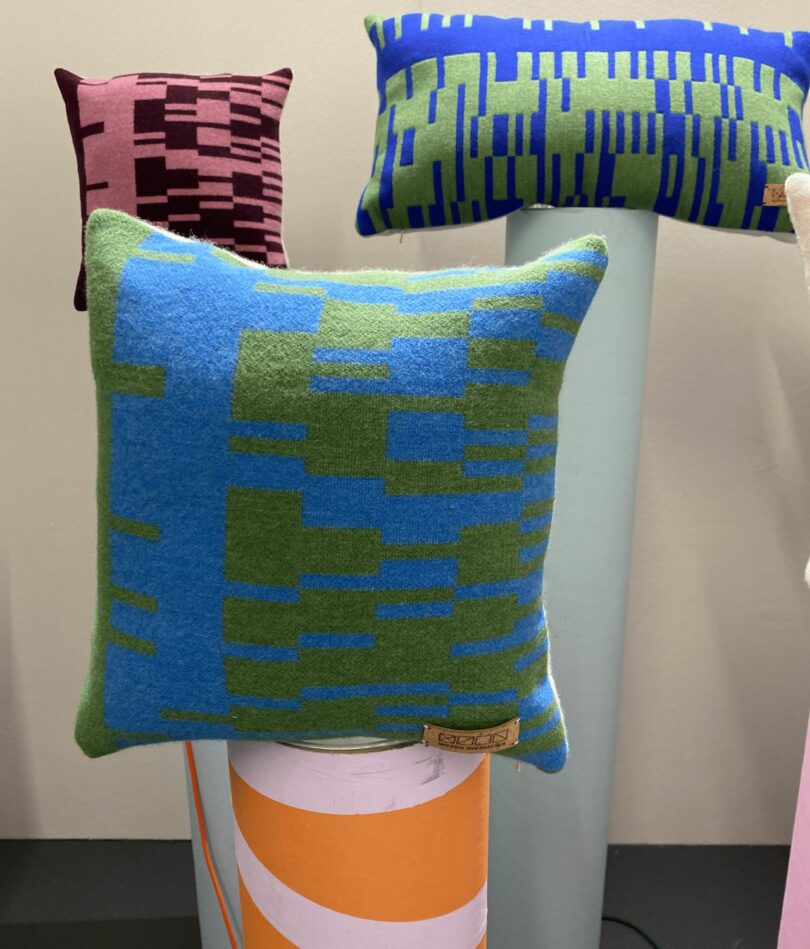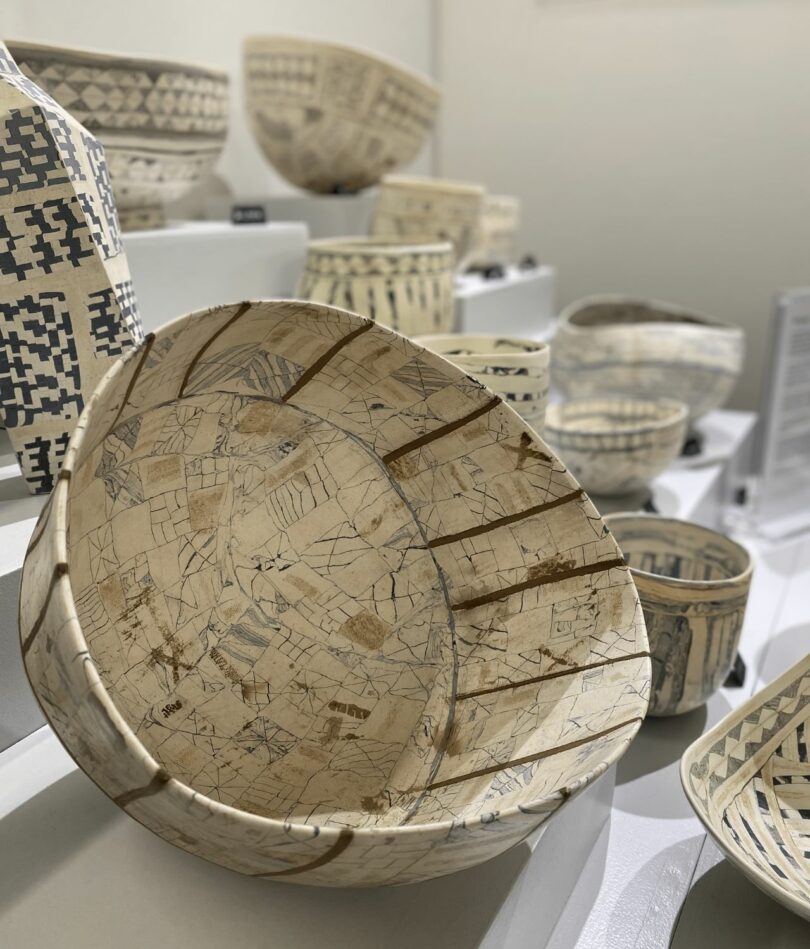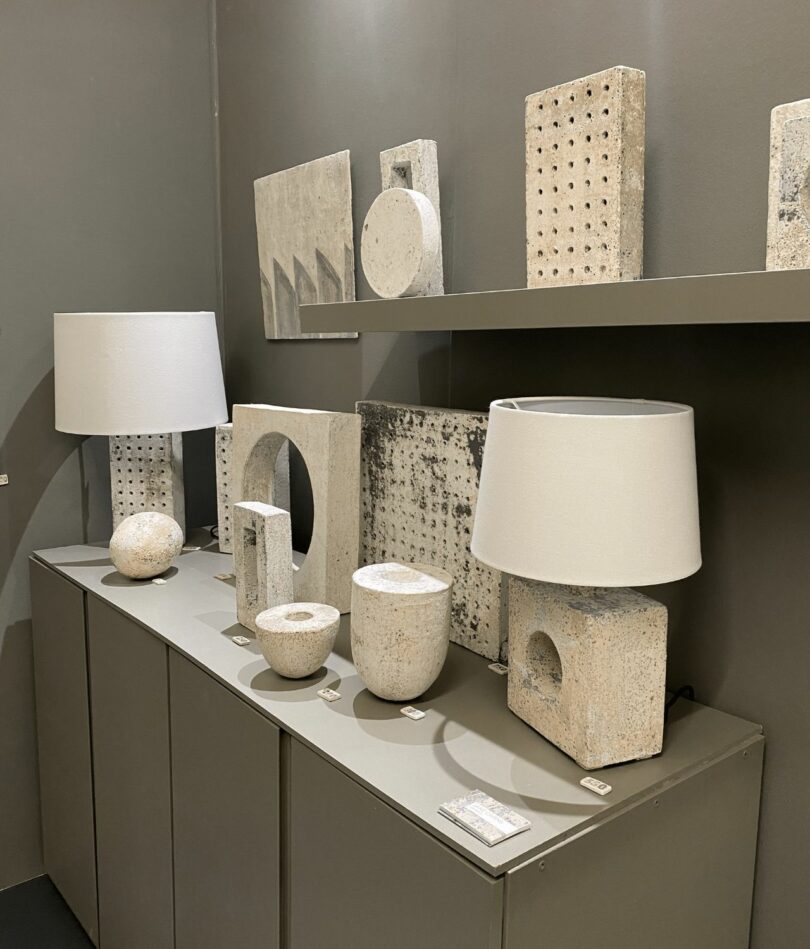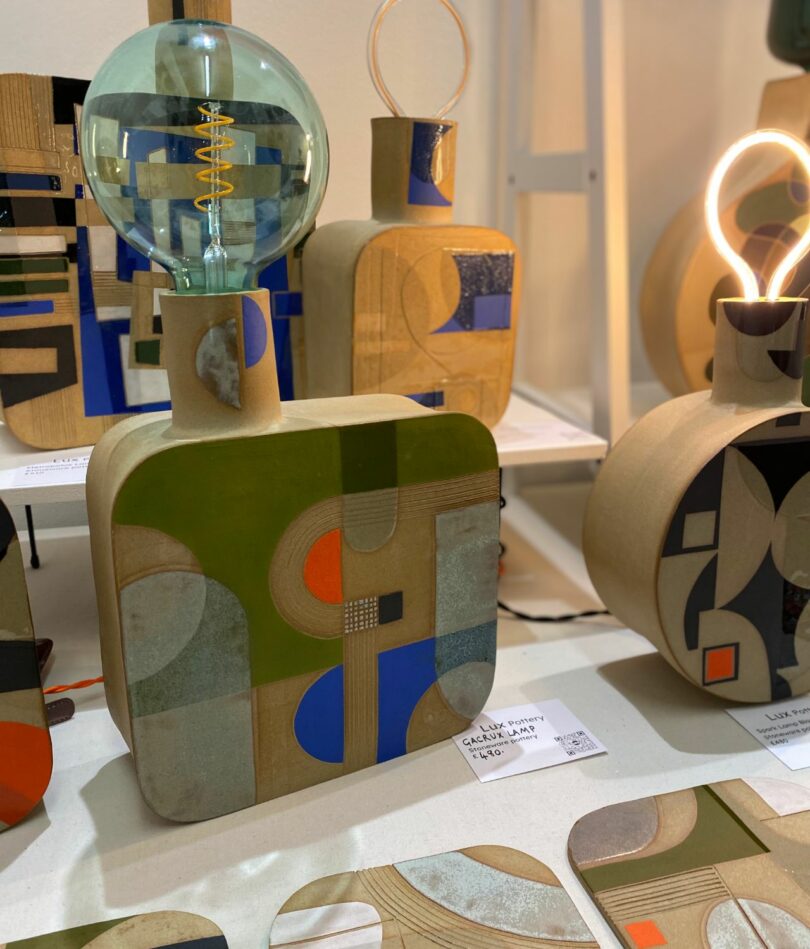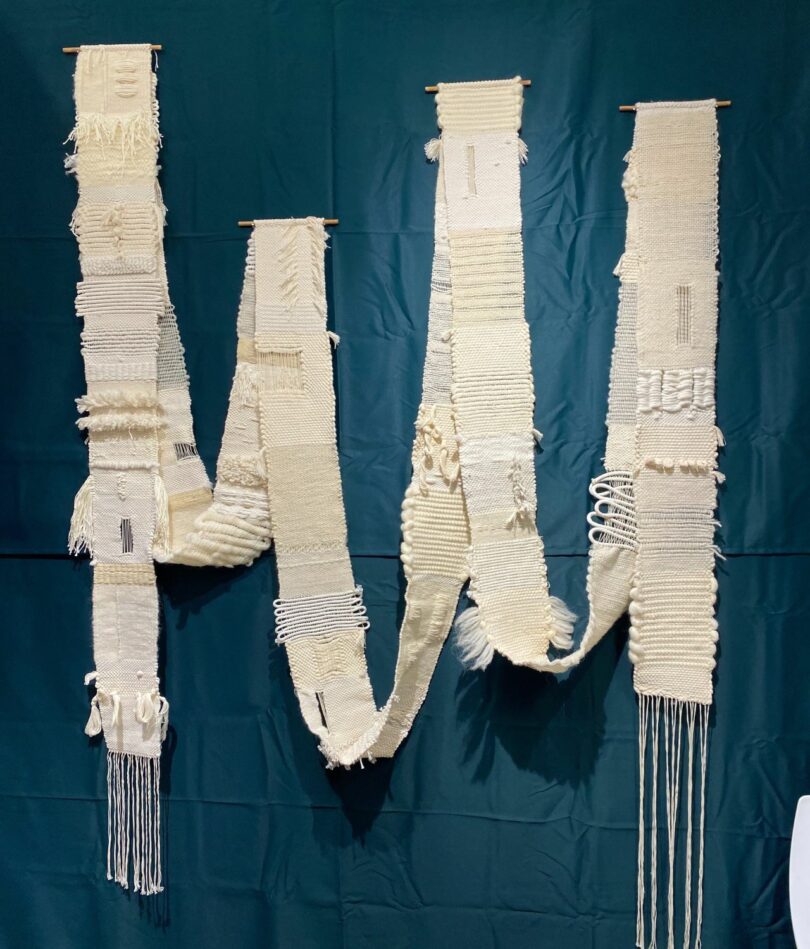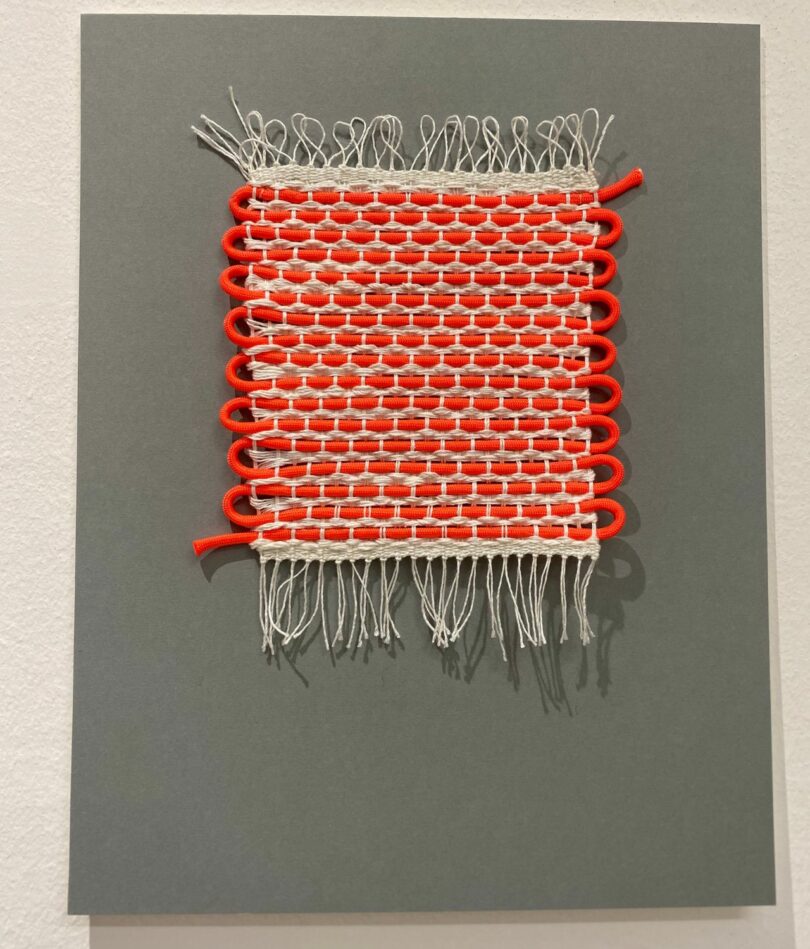“London’s favorite design fair is back” reads the London Design Fair’s website – and it is and it isn’t. The show, formerly known as Tent, is under new ownership, much smaller than in its pre-COVID heyday, and less tightly curated, but nonetheless it did contain some absolute gems. One of the highlights, not just of the London Design Fair but of the whole festival, was ‘You CAN Sit With Us’ curated by 2LG Studio, a London-based interior design and styling consultancy, founded by creative duo, Jordan Cluroe and Russell Whitehead (below left).
US Congress member Shirley Chisholm is credited with coining the oft-quoted expression, “If they don’t give you a seat at the table, bring in a folding chair.” But with Russell and Jordan about, you won’t be needing one. You CAN Sit With Us (emphasis on “can” and referencing the 2004 movie Mean Girls) is a curation that responds to prejudice they have felt and still feel from the industry. They placed a long dining table at the heart of an installation designed to explore inclusivity and asked emerging designers to each design one chair, giving them a platform so they wouldn’t experience the same barriers.
The project also included a collaboration with Granite + Smoke (pictured above with Jordan and Russell) whose colorful blankets featured the words from the exhibition title and with Custhom (immediately above). Other designers featured in the space include Ercol, Helen Kirkum, Wilkinson & Rivera, Sam Klemick, and Amechi Mandi.
The other part of the fair that really shone was the British Craft Pavilion and the first stand through the door belonged to furniture maker Nick James. Nick describes himself as “a highly skilled craftsman and tree lover.” He’s an advocate of traditional woodworking techniques, uses British-grown wood, making everything by hand in his Newcastle-upon-Tyne workshop, and feeds his creativity by spending every Wednesday in his local woodland.
Pamela Print spent 14 years in the fashion textiles industry and now relishes the slow pace of natural dying and hand weaving. Her Kantha III artwork (above) is hand-dyed using indigo and logwood plant dyes. As well as artworks, she also makes scarves, cushions, throws, and weaving kits.
Will James runs Knot Design from a small studio and workshop in central London, making to order and celebrating the natural imperfections of wood. Like many of his products, the Dickens Wall Shelf (above) can be completely customized by size, timber, and number of shelves, so it’s just as perfect for a tiny nook as it is to provide “a sprawling display for your cherished collectibles.”
Woven Memories cushions’ unique designs are created with an online tool that can turn any typed message into binary code and therefore a visual pattern. They are made from locally sourced and deadstock yarn to ensure their sustainability message is as embodied as the message coded into their designs.
Barbara Gittings is a Brighton-based ceramicist, specializing in Nerikomi techniques. Inspired by a former career in textiles, these involve adding oxides or stains to the clay to color it and then joining, slicing, and rejoining layers of colors to build up patterns through the clay, which she then slab-builds, biscuit-fires, and sands down before a final smoke firing and polish. The result evokes the multi-layered effects of nature, such as the laying down of strata, weathering, and erosion.
Pointing out negative spaces in the doorway opposite her stand that she is already convinced will inspire future work, Jane Cairns explains that her work (above) “is about finding beauty in the ordinary; about recognizing the accidental poetry in the unnoticed and overlooked,” she says. “Living in the city, this is often found in apparently insignificant visual details of the built environment – the space on a wall where something has been removed, a juxtaposition of materials, the sculptural qualities of found forms.”
Each lamp by Margate-based Lux Pottery is a slab-built stoneware artwork in its own right, brought to life with a vintage-style lightbulb. She also makes wall hangings inspired by her surroundings in referencing mid-century design motifs.
Outside of the British Craft Pavilion, a couple of stands really stood out, one of which was Brighton-based Spark & Bell – a sustainable lighting company that is even creating its own sheet materials from recycled plastic.
Another sustainable exhibitor of note was Studio Lia Karras, all the way from Winnipeg, Canada. Lia specializes in custom handwoven textile art for architectural spaces made with reclaimed and reimagined materials – often taken from the very buildings the resulting pieces are commissioned for.
“I believe that abundance could look different,” she says. “I believe in living and working gently and leading a lifestyle and practice where beauty, quality, and sustainability are in balance. In all of my work, I strive to contribute without taking; to make the best possible use of the resources available to me by thoughtfully re-imagining the materials at hand. I strive to create something beautiful, functional, subtle, and tactile.”
